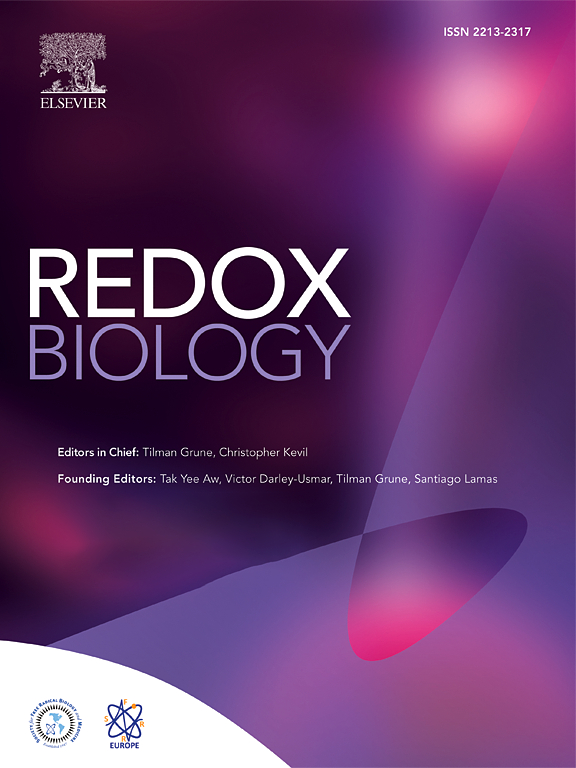Sulfhydrated albumin transmits H2S signaling and ameliorates DOX-induced multiorgan injuries
IF 10.7
1区 生物学
Q1 BIOCHEMISTRY & MOLECULAR BIOLOGY
引用次数: 0
Abstract
Hydrogen sulfide (H2S) is a vital signaling molecule involved in various physiological processes; however, the mechanisms underlying its systemic signaling remain poorly understood. We hypothesized that albumin, the predominant plasma protein and a vital sulfhydryl carrier, mediated systemic H2S signaling, which could potentially treat H2S-deficient diseases. This study aimed to investigate this hypothesis. Our results showed the presence of sulfhydrated proteins in normal mouse serum, with albumin being particularly enriched. The level of sulfhydration was influenced by H2S availability and the redox environment. In vitro incubation of albumin with NaHS resulted in an increased number of sulfhydrated groups. Under reductive conditions, this sulfhydrated albumin (–SSH–Alb) released substantial amounts of H2S. When –SSH–Alb was added to cultured endothelial cells, it activated the cAMP signaling pathway, upregulated cystathionine γ-lyase (CSE) expression, and enhanced intracellular H2S levels. In an in vitro inflammatory model involving macrophages and endothelial cells, –SSH–Alb inhibited macrophage adhesion, reduced LPS-induced expression of adhesion molecules, and suppressed cytokine production and inflammasome activation. These effects correlated with improved cellular redox status. Furthermore, in vivo administration of –SSH–Alb protected mice from doxorubicin (DOX)-induced cardiotoxicity and intestinal damage. It improved mouse mortality, and alleviated ferroptotic cardiac injury and gut barrier dysfunction. These therapeutic benefits were associated with rebalanced local and systemic redox status. In summary, our study reveals that –SSH–Alb reserves, transmits, and amplifies H2S signals and exhibits significant anti-inflammatory and antioxidant properties. This characteristic of –SSH–Alb holds promise for preventing and treating a wide range of diseases.

求助全文
约1分钟内获得全文
求助全文
来源期刊

Redox Biology
BIOCHEMISTRY & MOLECULAR BIOLOGY-
CiteScore
19.90
自引率
3.50%
发文量
318
审稿时长
25 days
期刊介绍:
Redox Biology is the official journal of the Society for Redox Biology and Medicine and the Society for Free Radical Research-Europe. It is also affiliated with the International Society for Free Radical Research (SFRRI). This journal serves as a platform for publishing pioneering research, innovative methods, and comprehensive review articles in the field of redox biology, encompassing both health and disease.
Redox Biology welcomes various forms of contributions, including research articles (short or full communications), methods, mini-reviews, and commentaries. Through its diverse range of published content, Redox Biology aims to foster advancements and insights in the understanding of redox biology and its implications.
 求助内容:
求助内容: 应助结果提醒方式:
应助结果提醒方式:


